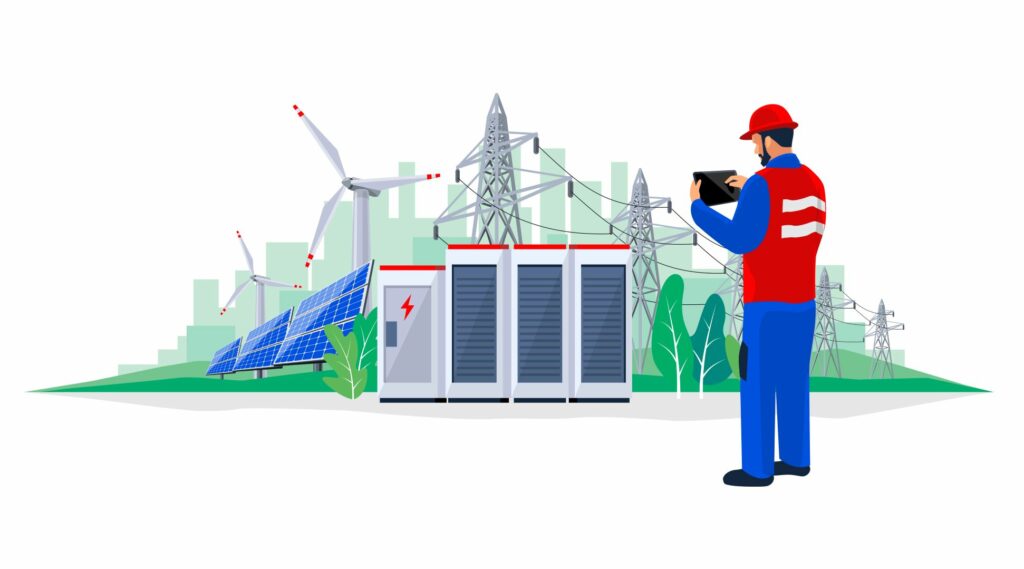Connected workers hold the key to decarbonization of the power sector
Digital technologies play a major role in supporting decarbonization, but it is the connected worker that will truly enable change
Written by Evgeny Fedotov, Senior Vice President, Europe, Middle East and Africa, AVEVA
With urgent action required on climate change, more than 130 countries have committed to or are considering net-zero targets, UN data shows. The power and utilities sector plays a crucial role in achieving those targets. Burning coal, oil and natural gas for electricity and heat is the largest single source of global greenhouse gas emissions (GHGEs), and accounts for 25% of total atmospheric discharges.
Decarbonization, defined as the process of reducing atmospheric carbon dioxide (CO2) resulting from human activity, will be central to achieving our common climate goals. Decarbonizing power, in particular, will go a long way to keeping temperature increases to 1.5°C. As an infrastructural prerequisite for transport, industry and other economic sectors, the power and utilities sector is essential to economic activity. And as we head towards the electrification of everything, decarbonizing power will have a knock-on effect on the wider economy.

Multilayered approach using digital technologies to support decarbonization
In practice, reducing carbon emissions from the power and utilities industries will require a multi-layered approach. Migrating to a greener energy system by substituting low-carbon energy sources for fossil fuels will reduce new emissions is the first step. At the same time, power authorities must look to phasing out inefficient fossil-fuel plants, maximizing existing grid efficiency and improving current energy productivity and storage, while ramping up efforts to improve carbon capture, utilization and storage.
Digital technologies have a significant role in augmenting decarbonization efforts, from plant design and execution to asset management and storage. Some examples are:
- Integrated engineering and design software helps control and accelerate the development of new renewable generation assets and helps find ways to optimize the operation of existing generation.
- Unified project execution solutions de-risk capital projects by forming a layer of risk protection via enhanced process governance, best-in-class change management, and data-centric construction planning and execution for on-time and on-budget delivery.
- Asset performance management tracks the health and functioning of plants and other assets, while optimizing for proactive maintenance execution.
- Using tools such as smart field devices and mobile inspection rounds, operators can determine the source of excessive emissions and optimize fuel consumption and utilization, maximizing efficiency in the process.
- Real-time enterprise data management allows grid operators to collect, store, display, analyze, and report on operational and asset health-related information.
A shift is already underway. IDC data indicates that 80% of utilities across sub-industries have implemented sustainable business models by accelerating digital transformation and rearchitecting the core business.
Decarbonization technologies need connected workers
However, digital transformation is about bringing about change through people, as nine in ten respondents in a recent AVEVA survey said. Digital workforce solutions are a priority for 71% of businesses, the survey found.
Field workers are essential to solving problems across the supply chain and adding incremental value to organizational processes. Simply put, the human factor remains critical to business success. But as pressure to achieve quick decarbonization increases, workers will need to be supported in making the best decisions with technological solutions, such as by way of centralized digital assets that offer granular information and indicate the most efficient and sustainable routes to action.
Decarbonization could triple the power industry workforce by 2035, adding about eight million new jobs in the US alone, Deloitte predicts. The new roles are likely to be technology-enablers – spanning automation, data management and analysis, digital operations, and software development.
The power sector has a limited amount of time to achieve the most significant transformation in its history. While digitalization will facilitate decarbonization, it is this emerging breed of connected workers that will unlock technology’s true benefits. The organizations that recognize this paradigm shift in human resources by onboarding and developing connected worker strategies will lead the way in delivering a cleaner and greener future for us all.